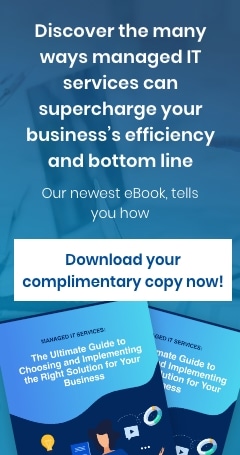If you’re a small- to mid-sized business (SMB), transitioning to the cloud can be daunting. You want to minimize downtime while moving to the cloud, which is why it pays to partner with a managed services provider (MSP) like Online Computers. Our years of experience and expertise guarantee that we can make your transition to the cloud cost-effective. More importantly, we can help you maximize your investment in the cloud and empower you to efficiently and effectively manage your cloud environments.
The three different cloud environments
But before sitting down with your MSP partner, you’ll do well to understand the different types of cloud environments available:
- Public cloud – This is the type of cloud that most people — especially users of Apple’s iCloud, Google Cloud, and Amazon Web Services — are most familiar with. It is housed in multiple servers capable of servicing a multitude of users who access it over an internet connection. The public cloud offers flexibility and scalability; on the downside, control of the environment is not with the users but with the cloud provider, like Apple or Google. For an average person, this lack of control may not be relevant. But for businesses with critical operations, it can be an issue.
- Private cloud – This type of cloud is exclusive to a particular business or organization’s use. The servers for the private cloud can be on-premises and managed by an in-house IT team, or they can be housed off-site and managed by a third-party service provider. Maintaining a private cloud is costly, which is why most private cloud users are government agencies, financial institutions, and large organizations that need to control over their technologies and their data.
- Hybrid cloud – It’s a customized combination of public and private clouds. Sensitive data is housed in a private cloud, but is moved to the public cloud when needed. With a hybrid cloud, you gain the flexibility and scalability of a public cloud, while also enjoying the security and control of a private cloud. And it’s affordable enough for SMBs.
Download our free eBook!
Learn the most common uses of cloud technology for small- and medium-sized businesses and how to maximize cost savings with various solutions. Read our free eBook: Demystifying the Cloud: What it is and why you should care now.
After that, you need to review and analyze your business workload requirements, because you’ll have to match your needs to the cloud environment that best fits them. To do that, ask yourself the following questions:
#1 What workloads will be managed in the cloud?
You need to know the details of your various workloads that will run on the cloud, especially if you’re using a hybrid. Where will the workloads run, on the public cloud, private, or both? Specifically, you should understand the following:
- Who are the workload owners? They’re the ones to contact should something go wrong.
- What’s the role of the workloads in your business? How critical are the workloads?
- When do workloads run? Which ones will run 24/7, and which ones will run only during certain hours of the day?
#2 What kind of security and governance will you need?
Security and governance are a necessity for businesses these days. These may require you to leverage new security mechanisms, like identity and access management, so you can have greater access control. And you also need to take into account the privacy policies that govern your industry to make sure that enforcing security does not hinder your operations.
#3 How will you manage different cloud environments?
Private and public clouds come with their own native application programming interfaces (API), and they manage their storage, networking, provisioning, and security differently. So either you learn the different native APIs for public and private clouds, or you can use tools to manage different cloud services using one interface. This is known as building a “single pane of glass,” and it allows you to communicate between different cloud environments with ease.
#4 What kinds of tools will you need?
With so many tools available, picking the right ones becomes imperative. You need to assess your requirements, figure out patterns of solutions, then choose application tools that match those patterns. If you can't find tools for all of your patterns, develop your own custom tools.
If any of the steps above seem difficult to understand or appreciate, do not panic. Truth is, transitioning your business to the cloud is a task best suited to cloud and IT solutions experts. If your SMB is located in or around Hanover, Morristown, or Madison, contact our experts at Online Computers. We’ll help you manage your workloads in the cloud the smart way.
Like This Article?
Sign up below and once a month we'll send you a roundup of our most popular posts





